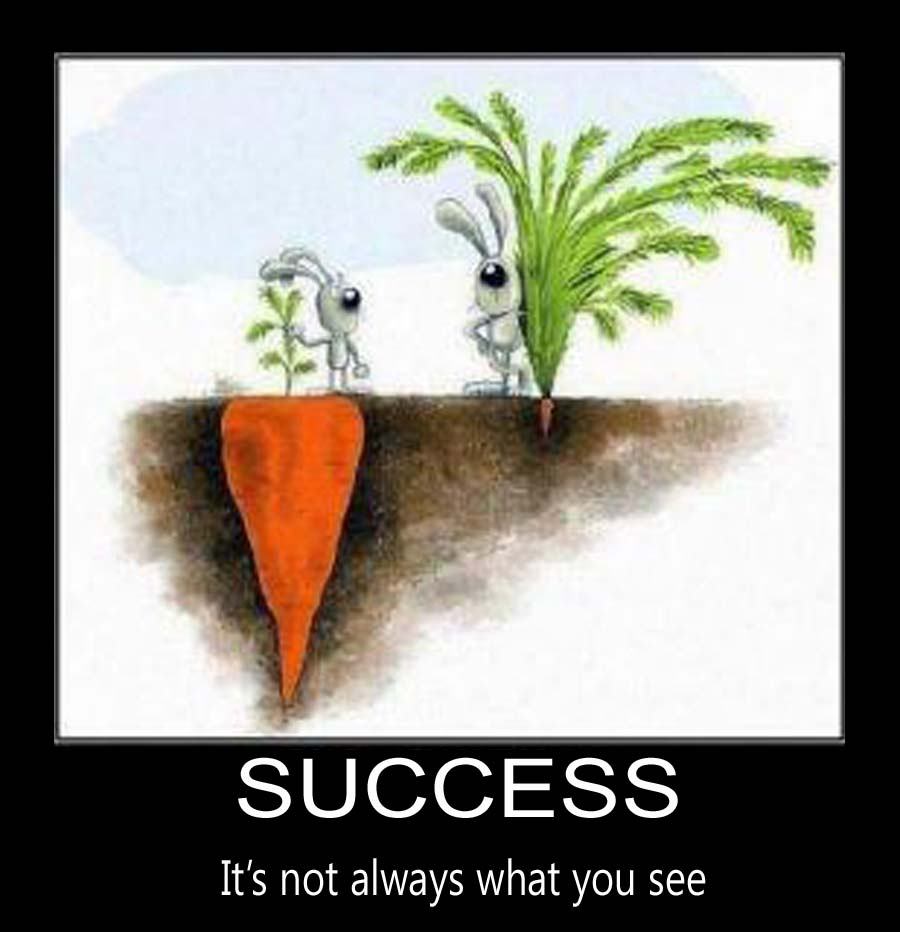At $15 billion, leadership development is definitely big business, not just for the companies that serve as participants but also for the companies that serve as providers. At that annual clip, there must be better assurance and demonstration that it actually works. In this month's article -
Why leadership development programs fail - McKinsey runs down for common mistakes:
- Overlooking context
- Decoupling reflection from real work
- Underestimating mindsets
- Failing to measure results
Whether you're a participant or provider, see if you or your company commits any of these.
Too many training initiatives we come across rest on the assumption that one size fits all and that the same group of skills or style of leadership is appropriate regardless of strategy, organizational culture, or CEO mandate.
This is the quandary with training programs: There may be legitimate efforts to personalize them for individual leaders, but by design they work at core assumptions that (a) these leaders share the same development needs and (b) these needs can be met with the same provisions. Moreover, in my experience, companies turn to training programs as a convenient but misguided solution to a host of disparate problems. Unless the problem is about building knowledge and skills, then such programs aren't the right ones. For example, it may be about performance, in which case direction, guidance, accountability or even discipline
may be the right solution.
The Core Algorithm offers a
meta-methodology for helping companies determine which methods will actually work for their particular purpose and their particular leaders. The Core Algorithm does not prescribe any methods
a priori.
Step 1. Begin with the end in mind
In the earliest stages of planning a leadership initiative, companies should ask themselves a simple question: what, precisely, is this program for? If the answer is to support an acquisition-led growth strategy, for example, the company will probably need leaders brimming with ideas and capable of devising winning strategies for new or newly expanded business units. If the answer is to grow by capturing organic opportunities, the company will probably want people at the top who are good at nurturing internal talent.
I'll reframe this crucial point from McKinsey: Instead of asking what the program is for, first ask yourself, say, as the CEO, what your company is trying to accomplish. It may be growth, or it may be a host of other things - innovation, transformation or people - that require review and clarity. That aim is translated into a goal, objective or target, and executed via strategy, planning and delivery closely attached to it.
Regardless of how it is translated or executed, that aim is your
end in mind and you
begin with it. Besides review and clarity, the CEO must work at getting support, engagement and commitment.
Step 2. Walk backwards to map pathways
When it comes to planning the program’s curriculum, companies face a delicate balancing act. On the one hand, there is value in off-site programs (many in university-like settings) that offer participants time to step back and escape the pressing demands of a day job. On the other hand, even after very basic training sessions, adults typically retain just 10 percent of what they hear in classroom lectures, versus nearly two-thirds when they learn by doing. Furthermore, burgeoning leaders, no matter how talented, often struggle to transfer even their most powerful off-site experiences into changed behavior on the front line.
Step 2 is based on a very simple algorithm: Do only what
works vis-a-vis that aim. There are certainly pluses and minuses to sending your leaders to a training program, but unless there is sufficient adaptation of such a program for particular leaders, it is bound to fall short. But again, because training is a one-size-fits-all by design, such a program may not be the most effective way to develop your leaders. Instead, they may need cross-functional assignments, secondment experience, or shadowing arrangements.
Specifically, walking backwards to map pathways begins with that end in mind. You then account for what I call
Immediate Impact factors: that is, actions or activities that lead directly to that aim you reviewed and clarified at the outset. If that aim is growth, then the immediate impact is
not, as McKinsey noted above, ideas or strategies. Rather, it is however growth is defined by the company: for example, sales, if it's revenue growth; deals, if it's a merger or acquisition; customers, if it's market share.
The crucial question becomes, What will it take for people in the company to generate more sales, strike more deals, and secure more customers? Accurately determining what people need will require asking them directly what they need.
Intermediate Impact factors continue the walk backwards process, based on the preceding question. These factors may or may not fall under leadership development. A highly talented and keen salesperson, for example, may need help dealing with a stifling, insecure manager, in order to cross-sell or up-sell to key customers. A company aiming to grow will probably need to revisit its remuneration strategy and schedule for sales people.
Finally,
Catalyst Impact factors are the direct precursors to whatever has intermediate impact. I find that some companies jump to kickoff sessions, top-level communication, and motivational tactics, before they've review and clarified their aim and before they've carefully mapped out what they need to do to realize this aim. Taking the preceding steps will identify specifically how you ought to initiate (i.e., catalyze) efforts.
Let's say that after due effort at the foregoing, leadership development is indeed a necessity. McKinsey asks a good question: What precisely is this for? I want to reiterate the reframe to that question: What is the company trying to accomplish or aiming for? The Core Algorithm is not meant to be a lock-step, linear
meta-process. Rather, it's meant to be recursive: It's perfectly fine, and may be a necessity, to go back to Step 1 time and time again to keep that end firmly in mind. In fact, if you're on Step 2 or Step 3 (next), and that question of What precisely is this for? crops up, then it's a signal to go back to Step 1.
The question that McKinsey doesn't ask prominently or explicitly enough is what sort of leadership development is needed. The answer (algorithm) is easier said than done: Whatever works best for each leader (participant). Whatever works may mean opening up your mind and rethinking what it takes to develop your leaders vis-a-vis the vision, purpose and priorities of the company. Training has a legitimate place in leadership development, of course, but it's simply not always the most effective or the right thing for your particular leaders.
Step 3. Walk the pathways
Step 2 is about mapping pathways from the end in mind, to where you and your company are now. Once mapped out, then it's a matter of doing whatever it takes to make sure the company follows these pathways. Step 3 is about action-planning and action-taking.
In a previous company, I drew up a simple model that worked quite well for getting things done: Initiative-Communications-Delivery (ICD) Model:
- Initiative. Formulate, or action-plan, what you're actually going to do to walk the identified pathways and thus realize your aim. Most business plan formats are workable, that is, as long as they identified SMART objectives, key actions, involved personnel, resources needed, and crucial accountability.
- Communications. Be thoughtful, targeted, clear and regular with your communications about what you're trying to accomplish and what you're going to do. Remember that communication is a two-way street, so it means asking and listening as much as telling and informing.
- Delivery. Implement the initiative, and follow through on commitments. There is a lot to the notion of under-promise, over-deliver. In The Core Algorithm, I emphasize promise-right, deliver-right, instead.
The Core Algorithm draws on what McKinsey runs down, and it expands on it at the same time. For example, underestimating mindsets is very much a common mistake in my experience, too. Time and time again, companies seem to forget the human elements of rolling out initiatives and developing leaders. In a much more complex work in progress, which I call The Human Algorithm, I offer the principal tenet that each of us is fundamentally, inviolably unique. Just as you have pundits and executives who tell you what a successful leader looks like and what he or she does, another leader comes along who bucks that profile or trend.
From the film `Moneyball, many people may come away with the belief that sabermetrics (i.e., statistical analysis or data analytics) is
the underpinning of the Oakland Athletics' success. But it is only one part of it. The other is how Billy Beane and Peter Brand end up working with the players themselves, that is, coaching and mentoring them, guiding and supporting them, even confronting and trading them.
So when I simplify the algorithm to doing whatever works, it also means doing whatever works for you as the CEO and each and everyone of these leaders whom you're developing. Hearts, minds and spirit - yours and theirs - must be in it sufficiently enough, otherwise development is a losing proposition or even an abject failure.
In my parlance,
The Core Algorithm accounts for the human elements.
Thank you for reading, and let me know what you think!
Ron Villejo, PhD





































